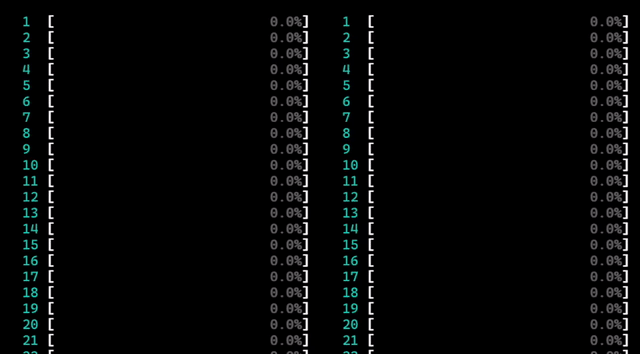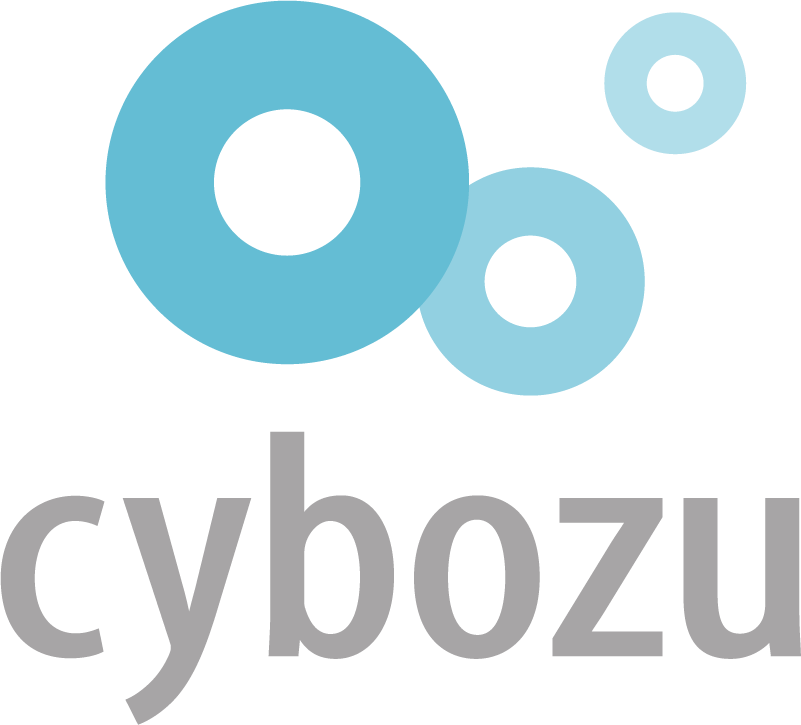|
|
||
|---|---|---|
| .github | ||
| common | ||
| docs | ||
| elf | ||
| test | ||
| third-party | ||
| .gitignore | ||
| CMakeLists.txt | ||
| CONTRIBUTING.md | ||
| dist.sh | ||
| install-build-deps.sh | ||
| LICENSE | ||
| README.md | ||
mold: A Modern Linker
This is a repo of a free, AGPL-licensed version of the linker. If you are looking for a commercial, non-AGPL version of the same linker, please visit the repo of the sold linker.
mold is a faster drop-in replacement for existing Unix linkers. It is several times faster than the LLVM lld linker, the second-fastest open-source linker which I originally created a few years ago. mold is designed to increase developer productivity by reducing build time, especially in rapid debug-edit-rebuild cycles.
Here is a performance comparison of GNU gold, LLVM lld, and mold for linking final debuginfo-enabled executables of major large programs on a simulated 8-core 16-threads machine.
| Program (linker output size) | GNU gold | LLVM lld | mold |
|---|---|---|---|
| Chrome 96 (1.89 GiB) | 53.86s | 11.74s | 2.21s |
| Clang 13 (3.18 GiB) | 64.12s | 5.82s | 2.90s |
| Firefox 89 libxul (1.64 GiB) | 32.95s | 6.80s | 1.42s |
mold is so fast that it is only 2x slower than cp on the same
machine. Feel free to file a bug
if you find mold is not faster than other linkers.
mold supports x86-64, i386, ARM64, ARM32, 64-bit/32-bit little/big-endian RISC-V, 32-bit PowerPC, 64-bit big-endian PowerPC ELFv1, 64-bit little-endian PowerPC ELFv2, s390x, SPARC64, m68k, SH-4 and DEC Alpha.
mold/macOS is commercial software. For mold/macOS, please visit https://github.com/bluewhalesystems/sold.
Why does the speed of linking matter?
If you are using a compiled language such as C, C++ or Rust, a build
consists of two phases. In the first phase, a compiler compiles
source files into object files (.o files). In the second phase,
a linker takes all object files to combine them into a single executable
or a shared library file.
The second phase takes a long time if your build output is large. mold can make it faster, saving your time and keeping you from being distracted while waiting for a long build to finish. The difference is most noticeable when you are in rapid debug-edit-rebuild cycles.
Install
Binary packages for the following systems are currently available.
How to build
mold is written in C++20, so if you build mold yourself, you need a recent version of a C++ compiler and a C++ standard library. GCC 10.2 or Clang 12.0.0 (or later) as well as libstdc++ 10 or libc++ 7 (or later) are recommended.
Install dependencies
To install build dependencies, run ./install-build-deps.sh in this
directory. It recognizes your Linux distribution and tries to install
necessary packages. You may want to run it as root.
Compile mold
git clone https://github.com/rui314/mold.git
mkdir mold/build
cd mold/build
git checkout v1.10.1
../install-build-deps.sh
cmake -DCMAKE_BUILD_TYPE=Release -DCMAKE_CXX_COMPILER=c++ ..
cmake --build . -j $(nproc)
sudo cmake --install .
You may need to pass a C++20 compiler command name to cmake.
In the above case, c++ is passed. If it doesn't work for you,
try a specific version of a compiler such as g++-10 or clang++-12.
By default, mold is installed to /usr/local/bin. You can change
that by passing -DCMAKE_INSTALL_PREFIX=<directory>. For other cmake
options, see the comments in CMakeLists.txt.
If you don't use a recent enough Linux distribution, or if for any reason
cmake in the above commands doesn't work for you, you can use Docker to
build it in a Docker environment. To do so, just run ./dist.sh in this
directory instead of cmake. The shell script pulls a Docker image,
builds mold and auxiliary files inside it, and packs them into a
single tar file mold-$version-$arch-linux.tar.gz. You can extract
the tar file anywhere and use mold executable in it.
How to use
A classic way to use mold
On Unix, the linker command (which is usually /usr/bin/ld) is
invoked indirectly by the compiler driver (which is usually cc,
gcc or clang), which is typically in turn indirectly invoked by
make or some other build system command.
If you can specify an additional command line option to your compiler
driver by modifying build system's config files, add one of the
following flags to use mold instead of /usr/bin/ld:
-
Clang: pass
-fuse-ld=mold -
GCC 12.1.0 or later: pass
-fuse-ld=mold -
GCC before 12.1.0:
-fuse-lddoes not acceptmoldas a valid argument, so you need to use-Boption instead.-Bis an option to tell GCC where to look for external commands such asld.If you have installed mold with
make install, there should be a directory named/usr/libexec/mold(or/usr/local/libexec/mold, depending on your$PREFIX), andldcommand should be there. Theldis actually a symlink tomold. So, all you need is to pass-B/usr/libexec/mold(or-B/usr/local/libexec/mold) to GCC.
If you haven't installed ld.mold to any $PATH, you can still pass
-fuse-ld=/absolute/path/to/mold to clang to use mold. GCC does not
take an absolute path as an argument for -fuse-ld though.
If you are using Rust
Create .cargo/config.toml in your project directory with the following:
[target.x86_64-unknown-linux-gnu]
linker = "clang"
rustflags = ["-C", "link-arg=-fuse-ld=/path/to/mold"]
where /path/to/mold is an absolute path to mold exectuable. In the
above example, we use clang as a linker driver as it can always take
the -fuse-ld option. If your GCC is recent enough to recognize the
option, you may be able to remove the linker = "clang" line.
[target.x86_64-unknown-linux-gnu]
rustflags = ["-C", "link-arg=-fuse-ld=/path/to/mold"]
If you want to use mold for all projects, put the above snippet to
~/.cargo/config.toml.
If you are using Nim
Create config.nims in your project directory with the following:
when findExe("mold").len > 0 and defined(linux):
switch("passL", "-fuse-ld=mold")
where mold must be included in the PATH environment variable. In this example
The above example uses gcc as the linker driver.
Use the fuse-ld option. If your GCC is recent enough to recognize this option.
If you want to use mold for all projects, put the above snippet to ~/.config/config.nims.
mold -run
It is sometimes very hard to pass an appropriate command line option
to cc to specify an alternative linker. To deal with the situation,
mold has a feature to intercept all invocations of ld, ld.lld or
ld.gold and redirect it to itself. To use the feature, run make
(or another build command) as a subcommand of mold as follows:
mold -run make <make-options-if-any>
Internally, mold invokes a given command with LD_PRELOAD environment
variable set to its companion shared object file. The shared object
file intercepts all function calls to exec(3)-family functions to
replace argv[0] with mold if it is ld, ld.gold or ld.lld.
GitHub Actions
You can use our setup-mold GitHub Action to speed up GitHub-hosted continuous build. GitHub Actions runs on a two-core machine, but mold is still significantly faster than the default GNU linker there especially when a program being linked is large.
Verify that you are using mold
mold leaves its identification string in .comment section in an output
file. You can print it out to verify that you are actually using mold.
$ readelf -p .comment <executable-file>
String dump of section '.comment':
[ 0] GCC: (Ubuntu 10.2.0-5ubuntu1~20.04) 10.2.0
[ 2b] mold 9a1679b47d9b22012ec7dfbda97c8983956716f7
If mold is in .comment, the file is created by mold.
Online manual
Since mold is a drop-in replacement, you should be able to use it
without reading its manual. But just in case you need it,
mold's man page is also available. You can read the
same manual by man mold.
Why is mold so fast?
One reason is because it simply uses faster algorithms and efficient data structures than other linkers do. The other reason is that the new linker is highly parallelized.
Here is a side-by-side comparison of per-core CPU usage of lld (left) and mold (right). They are linking the same program, Chromium executable.
As you can see, mold uses all available cores throughout its execution and finishes quickly. On the other hand, lld failed to use available cores most of the time. In this demo, the maximum parallelism is artificially capped to 16 so that the bars fit in the GIF.
For details, please read design notes.
License
mold is available under AGPL. Note that that does not mean that you have to license your program under AGPL if you use mold to link your program. An output of the mold linker is a derived work of the object files and libraries you pass to the linker but not a derived work of the mold linker itself.
Besides that, you can also buy a commercial, non-AGPL license with technical support from our company, Blue Whale Systems PTE LTD. If you are a big company, please consider obtaining it before making hundreds or thousands of developers of your company to depend on mold. mold is mostly a single-person open-source project, and just like other open-source projects, we are not legally obligated to keep maintaining it. A legally-binding commercial license contract addresses the concern. By purchasing a license, you are guaranteed that mold will be maintained for you. Please visit our website for the details of the commercial license.
Sponsors
We accept donations via GitHub Sponsors and OpenCollective. We thank you to everybody who sponsors our project. In particular, we'd like to acknowledge the following people and organizations who have sponsored $128/month or more:



